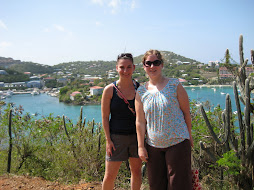Recently I adapted this recipe to Soup Made With Whatever I Could Find Plus An Onion From My Dad's House (he and Paula happened to be out of town and I liberated half an onion from their fridge when I went to check the mail). Chicken, black beans, onion, a can of diced tomatoes, carrots, some spices, and orzo. I put the ingredients into the crock pot and ignored, ignored it for many hours, and viola! Soup!
Then there was the pizza, I made my own whole wheat crust and put pesto, mozzarella, caramelized onions, sausage, tomatoes, roasted red peppers, roasted yellow squash, and feta cheese on top. Amazing!

Last, but certainly not least is the peanut butter/chocolate popcorn I made the other night. Pop one bag of light butter microwave popcorn and spread on a cookie sheet. Melt 1/2 cup of PB chips with one tablespoon of butter, pour over popcorn. Do the same with 1/2 cup of chocolate chips. Let cool. EAT! It was so good...I had to try extremely hard not to eat the whole batch...John would have been sad if I didn't save him a taste.
